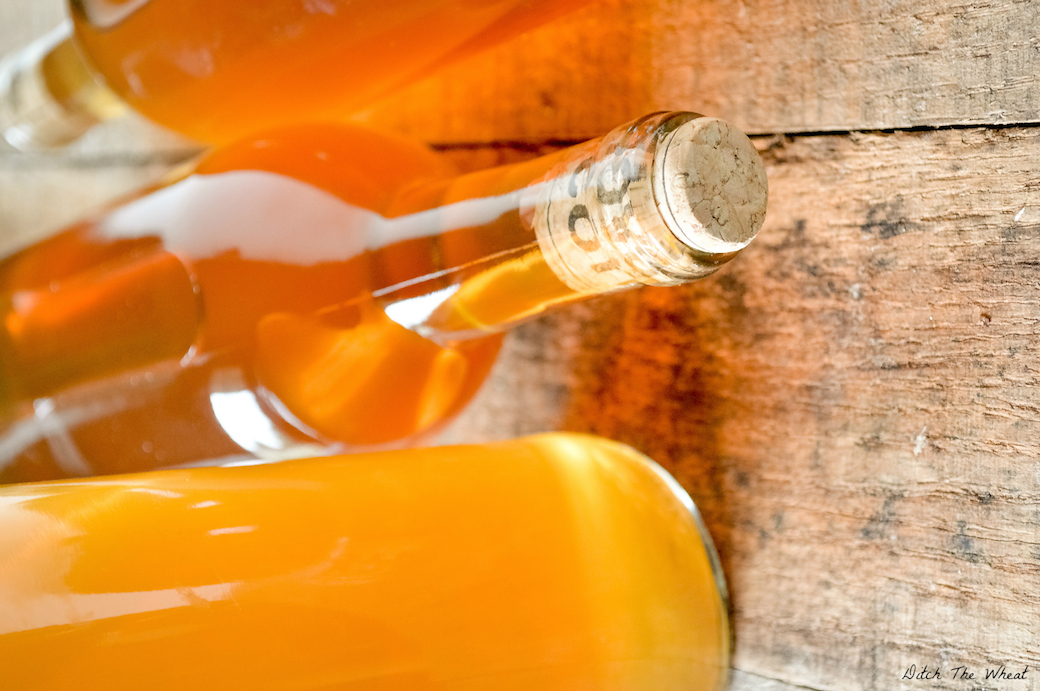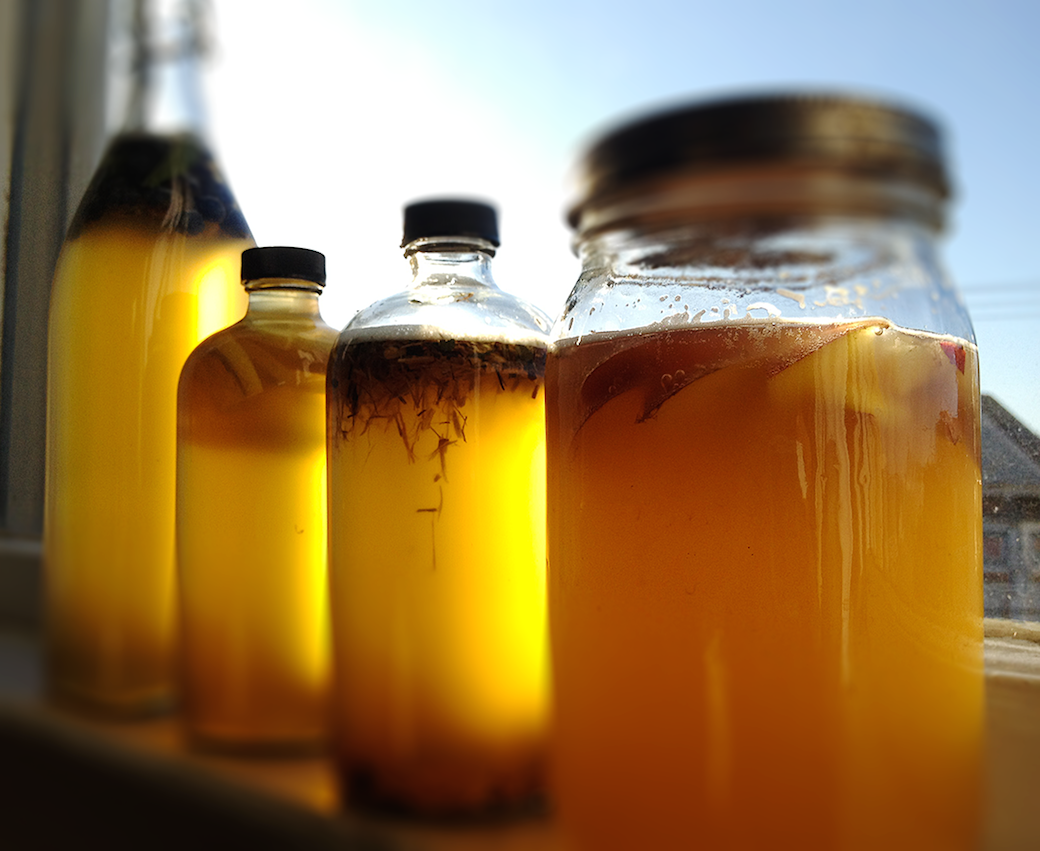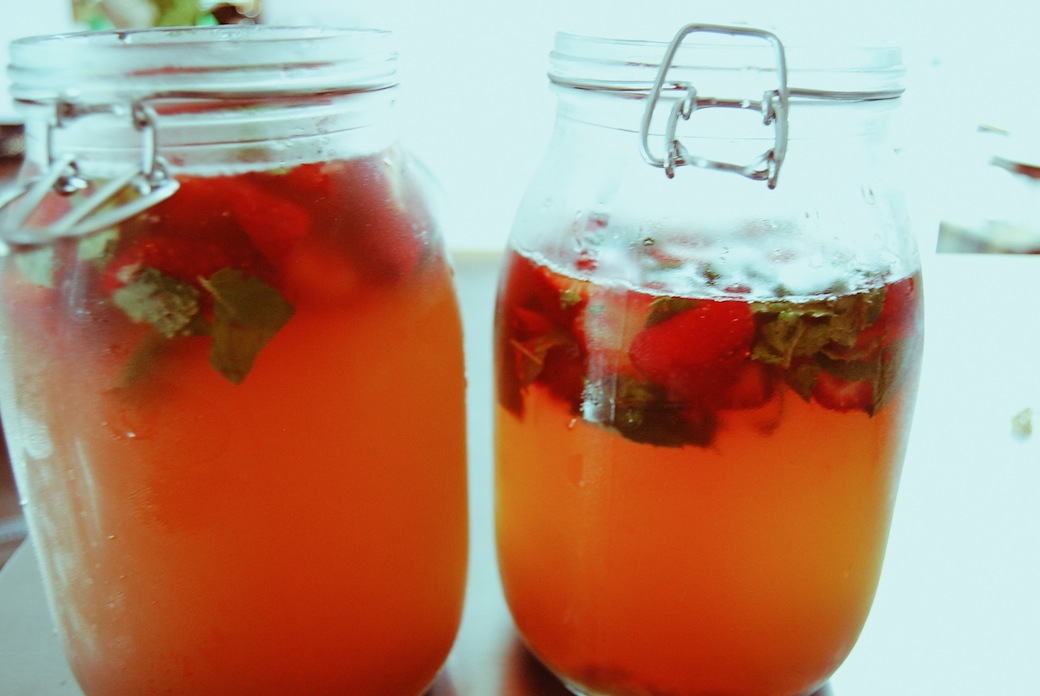Kombucha seems to be one of those age-old hippy tonics that has been gifted a sudden revival – captured by health professionals and hipsters alike, kombucha has been given a brand new status as a popular and indeed funky drink to publicly enjoy.
In Byron, we see bright and colourful bottles of Kombucha lining the shelves at supermarkets and health food stores, you can enjoy it on tap at the Roadhouse or you can pick up a flavoured bottle at Naked Treaties.
Like so many health remedies that are good for you, kombucha is actually easy to make at home. It costs very little to brew and it is a great addition to your daily diet.

To be honest, I’m not wonderful at following recipes – I’m the kind of person who throws in a pinch of this, a splash of that, a squeeze here, a dollop there and I’m done.
This is why the process of fermentation did tend to frighten me a little. It seemed akin to baking – a recipe that required delicate measurements and precise timing to ensure a perfect concoction.
Alas, a friend gave me a kombucha scoby about six months ago and I accepted it with a determined stance, deciding it was time to take on the challenge.
I spent some time online looking for the most perfect recipe I could find that was simple and foolproof. I discovered that the recipe itself was indeed very basic:
½ a cup of sugar and 4 black tea bags.

While that may not sound like the base of a healthy probiotic beverage, the SCOBY (Symbiotic Colony of Bacteria and Yeast) feasts on the tea and sugar converting it into healthy organic acids and creating an effervescent fermented beverage with a slight tang that is both tasty and good for you too!
I brewed the tea and measured the sugar. I caught hold of my wandering mind that wanted to substitute the raw sugar for coconut sugar and the black tea for Yerba Maté, deciding that I was better off perfecting the original recipe before experimenting with substitutions.
I waited for the tea to cool and added the slippery, slimy scoby to the jar along with the cup or so of kombucha that it had been living in from the last batch. Then it sat to rest and naturally ferment for 4-10 days.
At this stage of the process you may (like I did) ask yourself, “how on earth can this really be good for me?” Alas, in my research for the perfect recipe, I came to discover that yes, this odd-looking, strange smelling liquid was indeed good for you.
Kombucha has been fermented and brewed for over two millennia and has been said to have qualities that detoxify the body and energise the mind. Because it is naturally fermented with a living colony of bacteria and yeast, Kombucha is a probiotic beverage rich in living enzymes and healthy bacteria. This has a myriad of benefits, such as helping to improve digestion, fight candida (harmful yeast) overgrowth, increase mental clarity, and enhance mood stability.

Kombucha is also extraordinarily rich in anti-oxidants, which means it has the power to boost your immune system and energy levels.
The recipes I researched all suggested leaving the scoby for 4-10 days, which I found to be a rather open time frame! In my initial experiments, I opted for day 7, figuring that it was a safe middle ground.
The kombucha will ferment at a different rate depending on the outside air temperature, so you may find that in winter, you need to brew a little longer, and in summer four or five days may be enough. Then it’s only a matter of straining the liquid from the scoby, making sure you keep at least a cup for the next batch to begin. The scoby will have grown somewhat in size and should be floating at the top of the jar. Simply place the scoby in the reserved liquid while you wait for the next batch of tea to brew and cool.
The kombucha should taste sweet but not too sweet, a touch vinegary but not too vinegary. I like to add a squeeze of lime juice and some chopped ginger. The flavourings for kombucha are endless and you can also experiment with a second fermentation. Simply add chopped fruit (apple or strawberries work well), herbs (mint is lovely) or citrus, ginger or turmeric. Allow this to ferment for another day or two and your kombucha will take on a lovely flavour.

I have managed to keep my own kombucha alive and thriving for six months now and I have come to realize that it is fairly indestructible! I have left my batches for shorter times or longer times, left the scoby in the fridge for periods when I didn’t have time to make a new batch, and broken the scoby into new ones to gift friends when it grew too large and separated.
The first few sips of kombucha always lift me and give me a little high. It is deliciously refreshing, rejuvenating and energizing – the perfect beverage to enjoy on these warm Spring days.
So if you’re on the fence about good old kombucha, give it a go.
Find someone who can start you off with a scoby of your own, follow these simple instructions and start your own adventures with kombucha!
I assure you it’s not as scary as you think.
